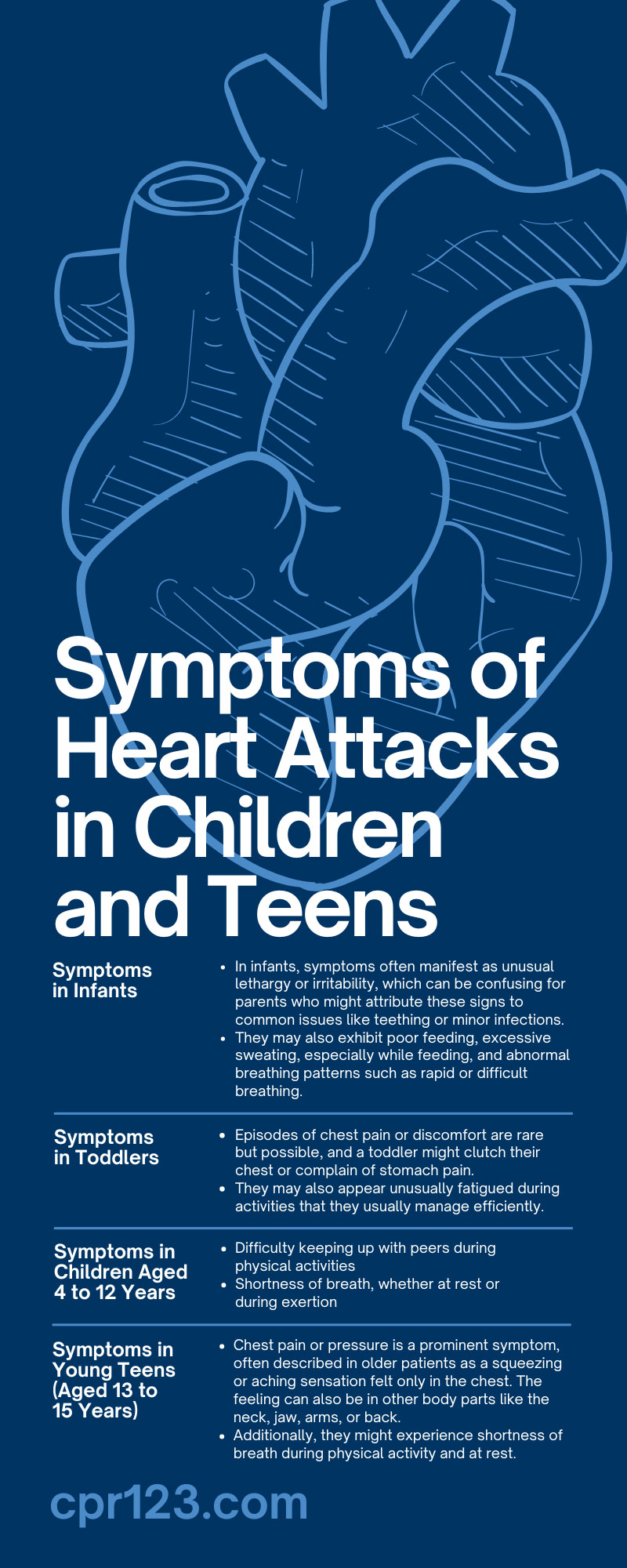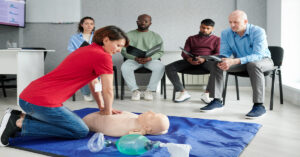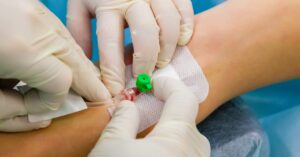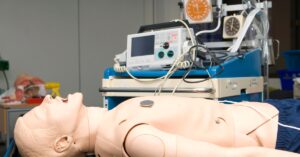We often hear about heart attacks in adults, but in children and teens, it’s not as expected. Though rare, these events warrant awareness due to their potential severity. However, the severity in children and teens differs from what we typically observe in adults, making it necessary for medical professionals to be vigilant. Understanding the signs can lead to prompt medical intervention, potentially saving lives. Let’s dive into the symptoms of heart attacks in children and teens to spotlight the crucial warning signs and understand the timeliness of medical attention.
Recognizing the Possibility of a Heart Attack in Children and Teens
Recognizing the possibility that a child or teen might be experiencing a heart attack is vital for several reasons.
- Early identification and intervention are critical to the immediate outcome of such a medical event.
- Misdiagnosing or overlooking heart attack symptoms in younger individuals can lead to delayed treatment, increasing the risk of severe complications or even death.
- By being aware and considering the potential for a heart attack, individuals involved in the medical care of a child or teen can ensure they take the proper steps for swift recovery.
- This vigilance can lead to more effective medical care and better long-term recovery prospects for the affected child or teen.
Symptoms in Infants
Infants and toddlers experiencing heart attacks may present with a range of symptoms that you may mistake for something else.
- In infants, symptoms often manifest as unusual lethargy or irritability, which can be confusing for parents who might attribute these signs to common issues like teething or minor infections.
- They may also exhibit poor feeding, excessive sweating, especially while feeding, and abnormal breathing patterns such as rapid or difficult breathing.
Unlike older children, infants can’t express their discomfort verbally, making it crucial for caregivers to recognize these subtle cues.
Symptoms in Toddlers
Conversely, toddlers might show different signs that can provide more direct insight into their condition.
- Episodes of chest pain or discomfort are rare but possible, and a toddler might clutch their chest or complain of stomach pain.
- They may also appear unusually fatigued during activities that they usually manage efficiently.
- A toddler’s skin may turn pallor or blue, particularly around the lips and fingertips, signaling a problem.
- Toddlers might exhibit excessive sweating and irregular breathing but may appear increasingly anxious or unusually distressed.
Distinguishing between these symptoms and those of less severe conditions can be challenging, but understanding these subtle differences in presentation between infants and toddlers is crucial to diagnosing a heart attack in toddlers and infants.
Symptoms in Children Aged 4 to 12 Years
Children between the ages of 4 and 12 may exhibit many different symptoms from infants and toddlers. Children are better able to articulate their feelings at this age, which can aid in early diagnosis.
Common symptoms include:
- Chest pain or discomfort (described as tightness or pressure)
- Fatigue
- Difficulty keeping up with peers during physical activities
- Shortness of breath, whether at rest or during exertion
Additional symptoms include:
- Rapid breathing or heart palpitations
- Unusual pale or bluish skin tone, particularly around the lips and extremities
- Excessive sweating without apparent cause
- Episodes of nausea or vomiting
Parents and caregivers must pay attention to these signs and seek medical advice promptly, as children in this age range are typically more active and less likely to exhibit lethargy without an underlying issue. Early recognition and intervention are paramount to preventing severe complications and ensuring effective treatment.
Symptoms in Young Teens (Aged 13 to 15 Years)
Young teens aged between 13 and 15 years can describe their discomfort, which can be instrumental in diagnosis.
- Chest pain or pressure is a prominent symptom, often described in older patients as a squeezing or aching sensation felt only in the chest. The feeling can also be in other body parts like the neck, jaw, arms, or back.
- Additionally, they might experience shortness of breath during physical activity and at rest.
Symptomatic fatigue is another critical indicator. A young teen struggling to easily complete activities they previously managed should raise concerns.
Other symptoms of a heart attack in a teen aged 13–15 include:
- Excessive sweating without apparent cause, dizziness, or lightheadedness
- Heart palpitations or an irregular heartbeat
- Nausea or vomiting
Parents, teachers, and health-care providers need to recognize these signs and understand that, while teens can articulate their symptoms better than younger children, avoid dismissing their claims for a less serious medical condition.
Symptoms in Older Teens (Aged 16 to 19 Years)
Older teens within the 16 to 19 age bracket often show symptoms of a heart attack that are similar to those observed in adults. Chest pain remains the most common symptom, typically described as a heavy, squeezing, or crushing sensation that may come and go. This pain can extend to the shoulders, arms, neck, and jaw.
Teens could have exacerbated chest pain caused by physical exertion, even while at rest. Fatigue, while normal on the surface, could also be a symptom. If fatigue doesn’t lessen after attempting to perform a regular task or exercise, there’s a chance your teen may be experiencing a heart attack.
Here are some other signs of a heart attack in a teen to keep in mind:
- Heart palpitations and irregular heartbeats often feel like pounding, skipped beats, and fluttering
- Older teens may report dizziness or lightheadedness, which can be alarming and lead to fainting in severe cases
- Skin color changes
- Gastrointestinal symptoms, such as vomiting, nausea, or indigestion-like discomfort
Prompt recognition and action concerning these symptoms are critical to averting severe complications and providing timely medical care.
Stay Aware of Heart Care
Recognizing the symptoms of a heart attack in children and teens is essential for ensuring timely medical intervention and effective treatment. Although heart attacks in younger individuals are rare, the potential severity of these events necessitates vigilance from those actively involved in a child’s or teen’s health. By being aware of the signs and symptoms across different age groups, one can act promptly and potentially save lives.
To further your knowledge and preparedness, consider enrolling in online courses for health-care providers offered by CPR123. These courses provide comprehensive training on recognizing and responding to cardiac emergencies, including heart attacks in various age groups. Equip yourself with the critical skills needed to respond swiftly and effectively—visit the CPR123 website today and explore their range of educational resources. Your proactive steps could make a life-saving difference.








